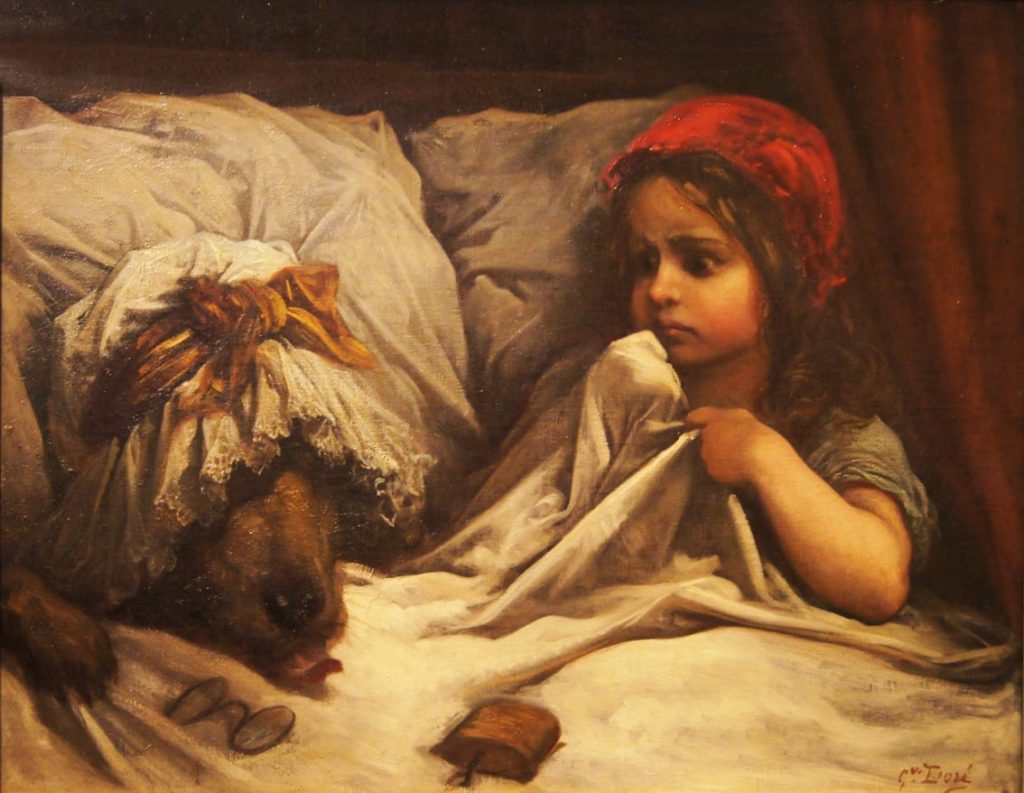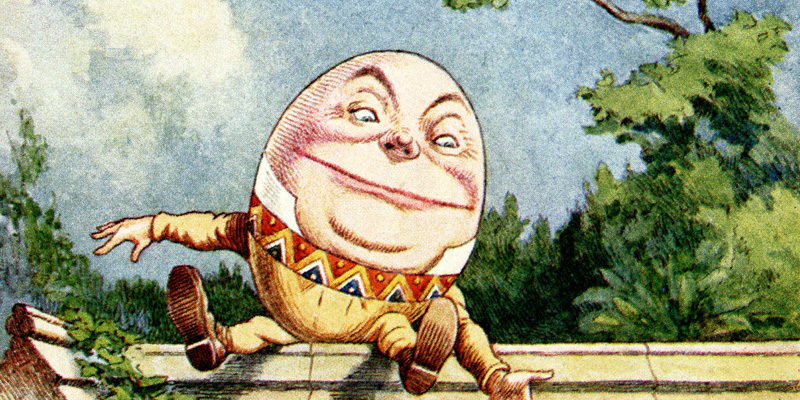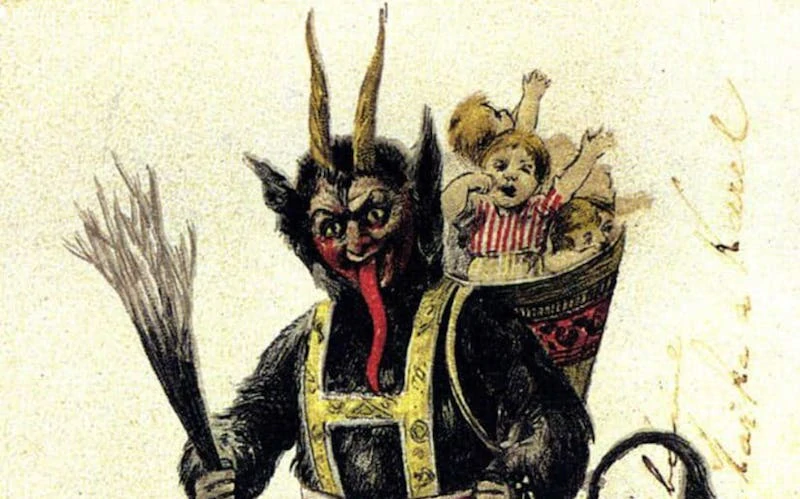Little Red Riding Hood. You know the story: A little girl in a red cloak and hood is told by her mother to take an item of food to her grandmother; while she’s en route to visit Granny, she meets the Big Bad Wolf, who tricks her into letting him sniff out the food; he then eats her up and impersonates her to get to Granny.
This tale has been told for hundreds of years, most famously by Charles Perrault in “Le Petit Chaperon Rouge” (17th century) and “The Grandmother” (19th century).
There are countless modern interpretations and retellings of this story, including the “Sleeping Beauty” themed interpretations or entirely different stories.
As with most folk and fairy tales, it’s hard to pinpoint a definitive version because many variants exist. However, what is interesting about “Little Red Riding Hood” is that there is a very gruesome ending in many versions: The wolf eats the grandmother and disguises himself as her to get Little Red Riding Hood to come close enough for him to eat her too.
It’s only on the approach of a woodcutter that he springs out of bed and gets killed or ran off, depending on which version you read. Today, we will look a little deeper into the history surrounding little red riding hood and what makes it different.

The History of Little Red Riding Hood
To briefly summarize the history behind this story, in 17th-century French oral tradition, “Le petit chaperon rouge” (“Little Red Riding Hood”) and its accompanying wolf character (Le loup) were separate stories.
“Le petit chaperon rouge” was a short tale told to children, which explains the full title of Charles Perrault’s 17th-century version of the tale: “Le petit chaperon rouge, ou La méprise du loup” (The Little Red Riding Hood, or The Wolf’s mistake).
In this part of France, le loup (“the wolf”) was a person, not an animal. There was also the story of le loup-garou (“the werewolf”), who resulted from a mortal being bitten by a loup-garou and then transforming into a loup-garou themselves.
This was the case of François Villon, widely regarded as France’s greatest 15th-century poet.
The story goes that after being arrested and thrown in prison for stealing from a church, he tried to escape by climbing out his cell window; the guards heard him trying to climb down the walls and shot him with arrows.
Villon supposedly returned sometime later—but not only had he escaped prison, but he’d also recovered after being shot by archers multiple times!
Only at this point did they realize that it wasn’t Villon who had climbed out of his window but a loup-garou who had taken on Villon’s form.
The legend goes even deeper than this: According to scholar Jack London (1972), it was said that Villon’s loup-garou form would roam the streets of Paris at night, getting into brawls and killing people.
Though this is all impossible to prove, it’s still interesting nonetheless and has a part to play in the thick plot of Little Red Riding Hood and her oral history.
A Little Red Riding Hood Story with a Twist
So, Perrault took elements from both “le petit chaperon rouge” and “le loup.” The wolf also acquired many different motives in his various appearances: In some retellings (including Charles Perrault’s version), he devours the grandmother because she refuses to give him any food.
In others, he does so out of sheer maliciousness or for no reason at all; while yet other versions have the wolf only scaring the grandmother to death.
So yeah, a wildly different interpretation from what we’re all used to! There have been many different interpretations of this story, including the “Sleeping Beauty” themed ones.
In some versions, such as “Little Red Riding Hood with the Golden Hair,” she is more of an antagonist than a heroine: She’s portrayed as vain and disobedient to her grandmother.
When she comes across a stranger in the woods, it ends up turning out to be a prince who has been magically transformed by a wicked fairy into that form and sent into exile because he would not marry her.
The girl helps him escape from his punishment, but only after he promises to marry her at once and take her back home with him. While all of these may seem like modern retellings at first glance, they’re much older: They were all written in the 19th century—between 1812 and 1861.
The most famous retelling of Little Red Riding Hood is probably Charles Perrault’s version, published in 1697 in his book “Histoires ou Contes du temps passé, Avec des moralités” (literally: Stories or tales of ancient times with morals). It’s this version that influenced many later adaptations of the story.
It’s interesting how one core version got through, which ended up being the one we all know today—popularized by pop culture and things like Disney.
In conclusion, it is important to understand how stories change through time to fit audiences. How does one know when to accept a tale for what it truly is and question why it was told? Even since the 20th century, there have been multiple adaptations of the story over and over.
However, the one traditional retelling always comes through: Little red riding hood finds her grandmother, who has been devoured by the wolf and is tricked into getting closer to him.
The woodsman shows up before he can eat her and ends up killing the wolf. When we take this version and look back at all the previous iterations, we can see how many times a story can be changed.
This observation helps us develop our critical thinking skills while exploring different texts to understand their influence on us.
Looking back at the different forms of an age-old story helps us understand the different audiences this story has appealed to and why they were written the way they were.

